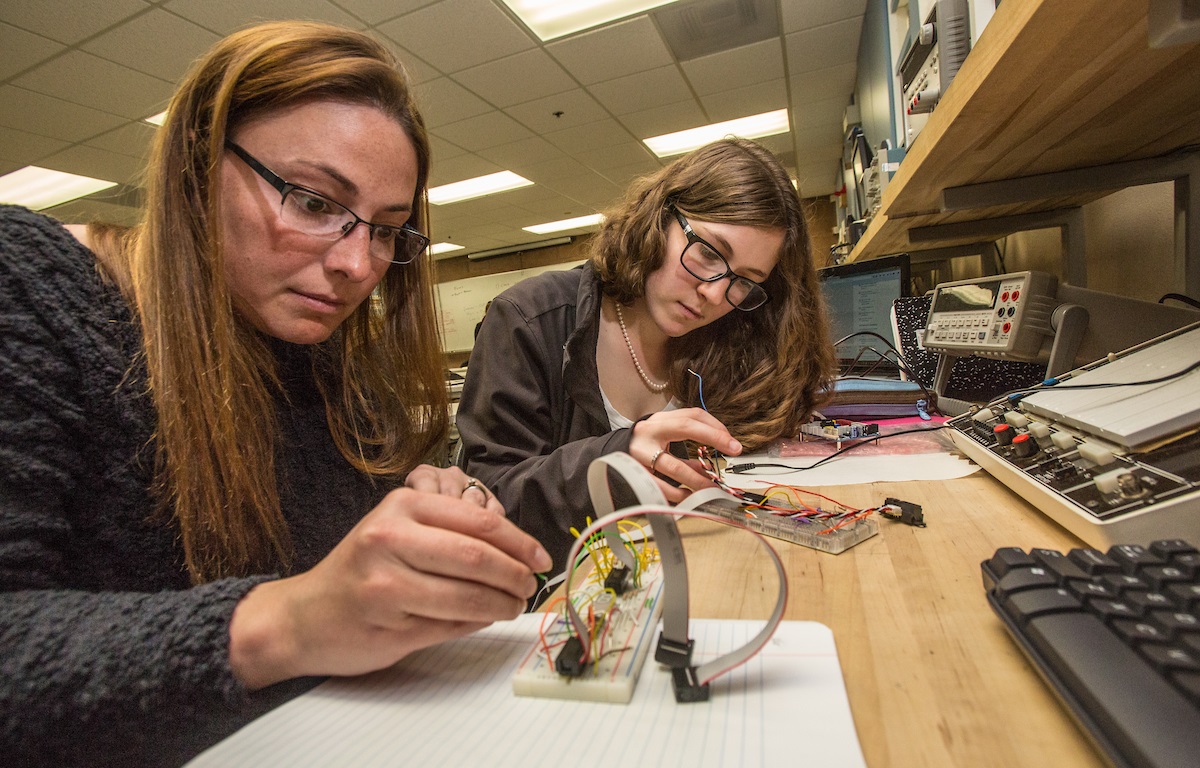Embry-Riddle Team Wins $2 Million NSF Grant to Turn More Students into Engineers

The U.S. engineering field, which currently provides some 1.6 million jobs, will add 135,000 more positions by 2026, the American Society for Engineering Education (ASEE) has reported. Many of those jobs will remain unfilled unless universities can turn more students into engineers, according to a recent study that looked at manufacturing needs versus the workforce.
With a new $2 million grant from the National Science Foundation (NSF), Embry-Riddle Aeronautical University researchers plan to help more aspiring engineers bridge the gap between their introductory and capstone courses – a risky crossing where too many students get tripped up and drop out.
Dr. Tim Wilson, chair of Electrical, Computer, Software, and Systems Engineering at Embry-Riddle and principal investigator for the NSF project said the support will help department faculty leverage an agile decision-making method called Scrum. The approach makes it possible for educators to more rapidly develop effective new curriculum, teaching methods and policies in response to students’ needs, Wilson explained.
What is the Scrum Method?
In the early days of the U.S. space program, Wilson noted, “All of the engineers would be in the same room, talking to each other every day to find solutions to problems no one had tackled before.”
The Scrum method works in much the same way, he said, by convening individuals who already work well as a team to rapidly iterate better and better solutions. In contrast, the conventional approach has been to convene committees encompassing representatives from many different departments who establish a lengthy sequence of tasks and a timeline. The Scrum approach allows teams to work smarter and faster.
“This research will put a process in place to help engineering faculty get things done more efficiently so they can spend more time on research and instructional improvements, and still have a life,” Wilson said. “Work quality goes way up when faculty are liberated to be the best educators they can be.”
Wilson’s collaborators on the new NSF project are Psychology Professor and Chair of the Behavioral & Social Sciences Department Dr. Erin Bowen; Scrum expert and Professor of Computer and Software Engineering Dr. Massood Towhidnejad; and Associate Professor of Engineering Dr. Jay Pembridge, who focuses on evidence-based approaches to improving education. The project, “Using Scrum to Develop an Agile Department,” will be supported under NSF grant number 1920780.
Revolutionizing Engineering Education
Bolstering student success rates in engineering degree programs is essential, particularly given the need to tap the entire potential talent pool, the ASEE has noted. Women claimed only about one-fifth of all engineering bachelor’s degrees in 2016, while black or African-American students made up a mere 4% of the overall cohort. “The inclusion of persons from groups underrepresented in most disciplines of engineering and computer science has remained a stubborn long-standing issue,” the NSF has pointed out.
As a catalyst for change in education, the Scrum method “can absolutely support the evolution of a more inclusive and diverse environment,” Bowen said, because the framework requires participants to stop periodically and reflect on broad issues. “Opportunities to self-evaluate include reflecting on what viewpoints and backgrounds need to be represented on the projects, and whether parts of the environment are inhibiting contributions from certain members,” she explained.
Towhidnejad noted that Embry-Riddle has been applying the Scrum method in engineering capstone courses for the past half-dozen years. For example, he said, students have used the Scrum process to tackle challenges such as a mission involving two drones, one of which must protect the other one, and a system to help students find parking spots.
“Traditionally, students training to become engineers work on projects for an extended amount of time without having anything to show for their hard work,” Towhidnejad noted. “One of the advantages of the agile Scrum process is that they can see the result of their work at the end of each `sprint.’ They continuously receive positive feedback, and that can be very encouraging.”
How will the Embry-Riddle research team measure success? Bowen said her role as an industrial/organizational psychologist will be to “assess the return on investment of Scrum on performance as well as the attitudes, behaviors and culture of the department.” That work will involve quantitative data collection, assessment and analysis.
Pembridge will use a case-study method involving interviews, surveys, classroom observations and more. The team will look in particular at “how faculty’s collective sense of agency to innovate and address key needs to enhance the department’s vision increases through the use of Scrum operations.”
The overall goal, he said, is to leverage evidence-based instruction and inclusive teaching approaches to help students achieve their academic goals in engineering.
 Ginger Pinholster
Ginger Pinholster